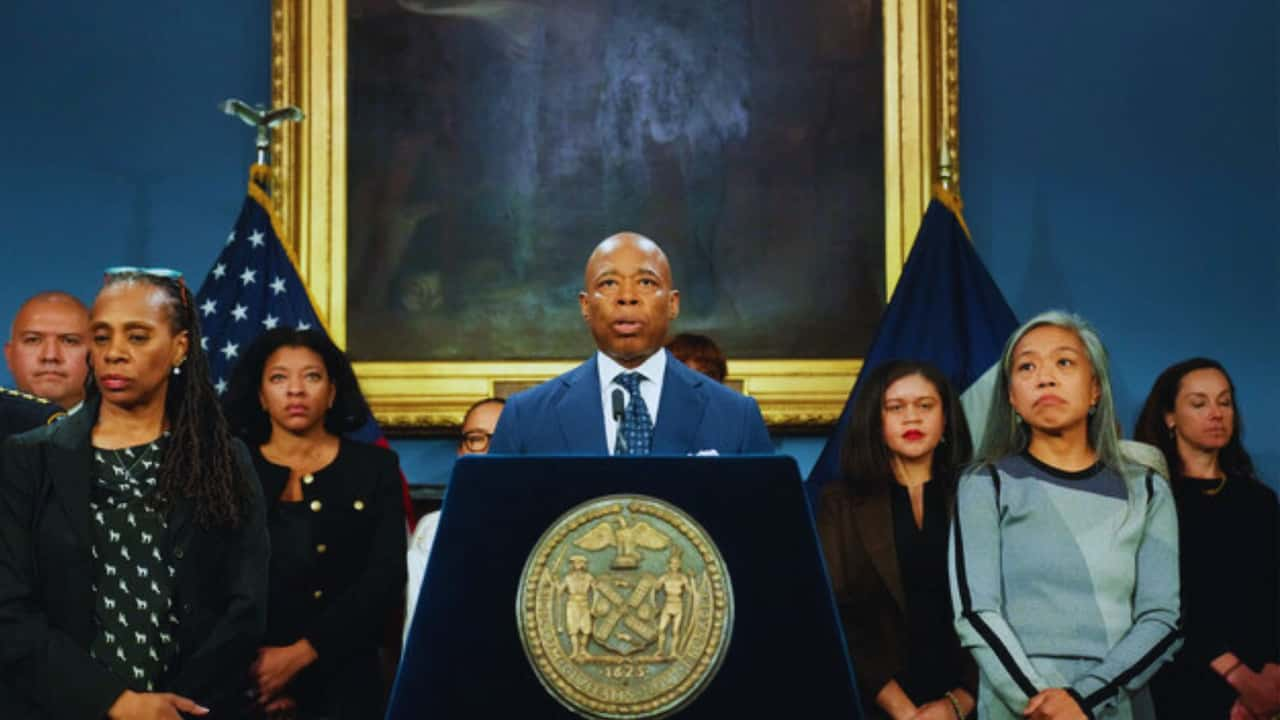Border Crisis Showdown: NYC’s Adams Calls for Immigration Reform Amid Trump’s Return
Mayor Eric Adams of New York City is making headlines as he navigates the complex landscape of immigration policy following Donald Trump’s recent election victory. Surprisingly, the Democratic mayor is reaching out to the incoming Republican administration, all the while maintaining his city’s sanctuary status.
Adams spoke candidly about the current state of affairs during Tuesday’s press conference at City Hall. “Fix immigration so that no city will have to go through what I went through,” he declared, pointing to the overwhelming challenge of managing nearly 500,000 undocumented immigrants in New York City, with 200,000 new arrivals in just the past two years.
The mayor’s position embodies a nuanced equilibrium. While he strongly opposes mass deportations, calling such approaches “inhumane,” he acknowledges the urgent need for border security and immigration reform.
“I’m not a supporter of mass deportation,” Adams emphasized. “I advocate for securing our borders and providing a pathway to employment for parolees, enabling them to self-sufficiency.”
This pragmatic approach has drawn both praise and criticism. Public Advocate Jumaane Williams accused Adams of potentially “standing alongside Trump,” while others see it as a necessary step toward meaningful reform.
The mayor’s suggestion to direct asylum seekers to areas in need of workers demonstrates a practical approach to addressing both immigration and labor needs.
The situation has become more pressing with Trump’s appointment of Tom Homan as “Border Czar.” Homan’s warning on Fox News was clear: “We may have to double the number of agents we send to New York City because we’re going to do the job.” This statement has sent ripples through immigrant communities, leading to immediate concerns about access to essential services.
Manuel Castro, New York’s Immigration Commissioner, addressed these fears head-on: “We want to reassure people that they do not need to self-deport; they do not need to hide. They can continue to use our city services, especially emergency services, like our police department, our hospitals, and so on.”
The city’s response to this crisis has evolved significantly. After warning that the migrant influx could “destroy” New York and threatening budget cuts, Adams has since adjusted his stance as the situation stabilized and tax revenues exceeded expectations. However, the challenge of balancing humanitarian obligations with practical constraints remains.
Looking ahead, several key issues demand attention.
- The future of sanctuary city laws and potential coordination with ICE on criminal cases are important issues to consider.
- Expedited work authorizations for asylum seekers
- The country distributes migrants according to labor needs.
- We safeguard vital services for communities of immigrants.
New York City finds itself at the intersection of national immigration policy and local governance as this story unfolds. The coming months will test whether Adams’s attempt to bridge the gap between humanitarian concerns and practical solutions can succeed in the face of potentially stricter federal enforcement policies.
The mayor’s willingness to work with the incoming Trump administration while maintaining protection for immigrant communities represents a bold attempt to find middle ground in one of America’s most contentious policy debates.
Whether this approach will yield results remains to be seen, but it marks a significant shift in the conversation about immigration reform at both local and national levels.
